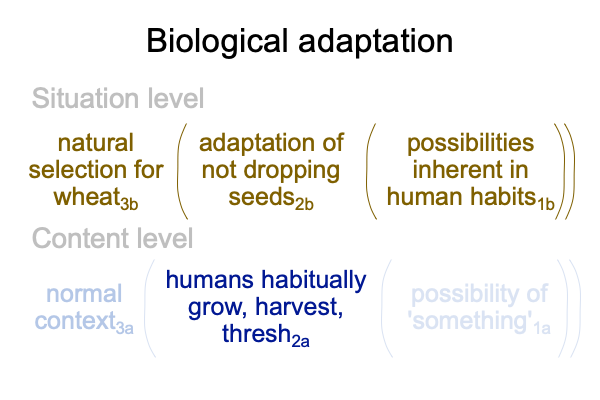0041 Clearly, Hodder’s theory of entanglement requires embellishment. Sensible construction alone will not do. Social construction is another facet of entanglement. In the houses of Catal Hoyuk, no one ever uses the terms, “belonging”3c, “home”2c or “reside”1c. Instead, they know the meanings, the presences and the messages of these terms in their hearts. They are habits of being.
What is it like to dwell in a living world where gesture-words are defined by things and events that one can picture or point to?
0042 Here is another application of Hodder’s sensible theory of entanglement.
Most likely, each filled-in element has corresponding manual-brachial gesture-words.

During the epipaleolithic, humans sow an original wild wheat on newly exposed riverbeds on the edges of streams. Why? Well, they observe that the riverbeds are nice little plots of land, free of weeds, that can be used to grow a preferred brand of grass. Why sow grass? There are lots of practical uses for grass, including mixing with clay to make stucco for houses and tinder for lighting fires.
0043 That is just the start.
The grass responds with an adaptation honoring the seeds that the humans sow. Human habits increase the potential for robust rachis, rather than delicate rachis. Grass with delicate rachis drop their seeds when humans cut the stalk. Stalks with robust rachis retain their seeds for humans to thresh and use again. Plus, they are edible. Put some in a pot with milk and place the pot in the fire for a while and the result is a delicious and teeth-rotting mush.

0044 Today’s technical name for the new variety is “emmer wheat”. During the early Neolithic, emmer wheat becomes common throughout southwest Asia. Mush gets added to the menu. But, soon enough, new culinary adaptations arise, including bread and beer.
